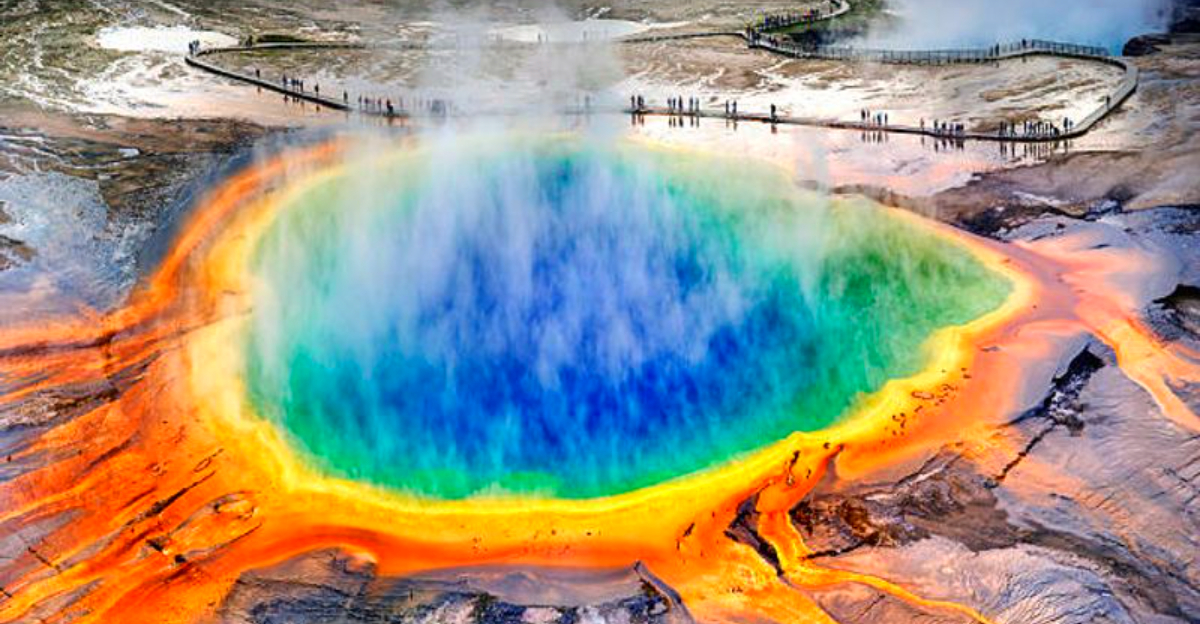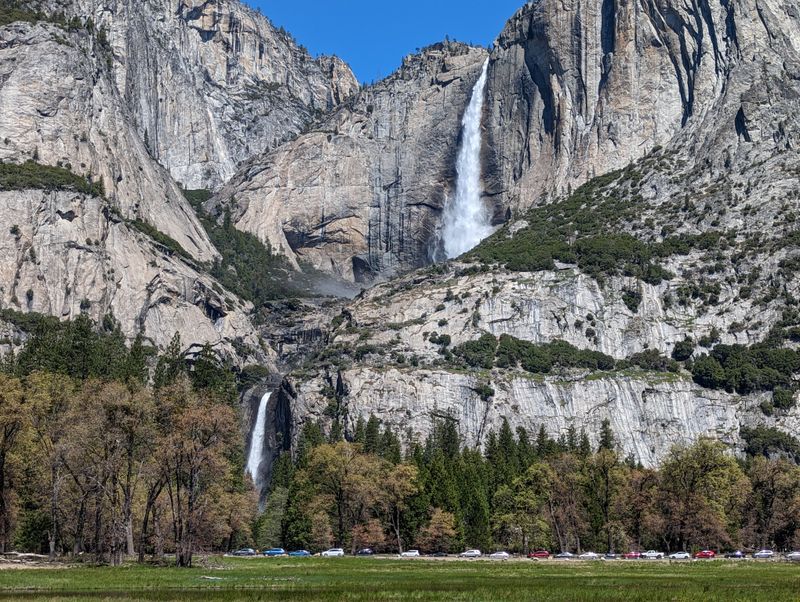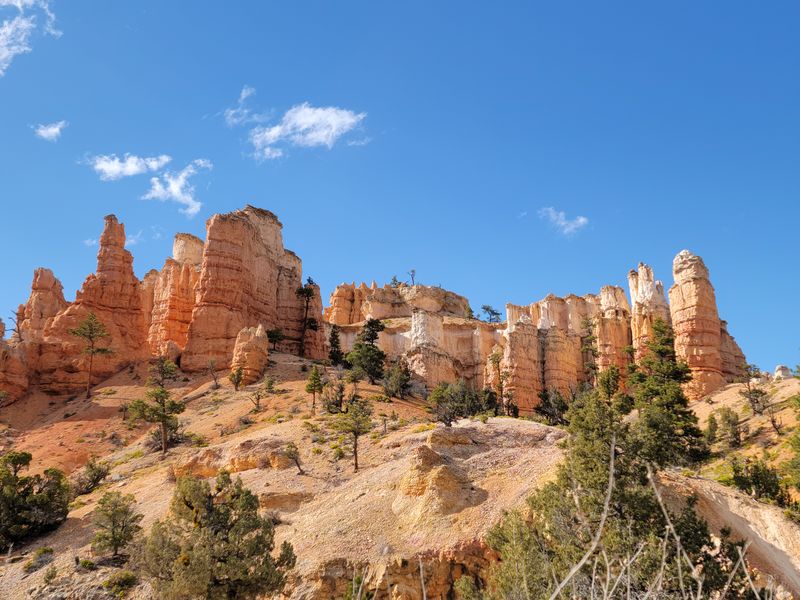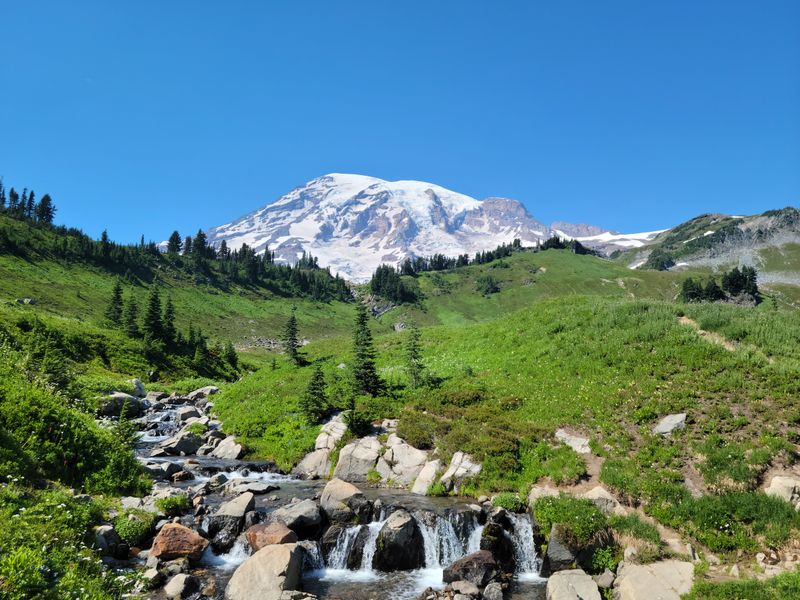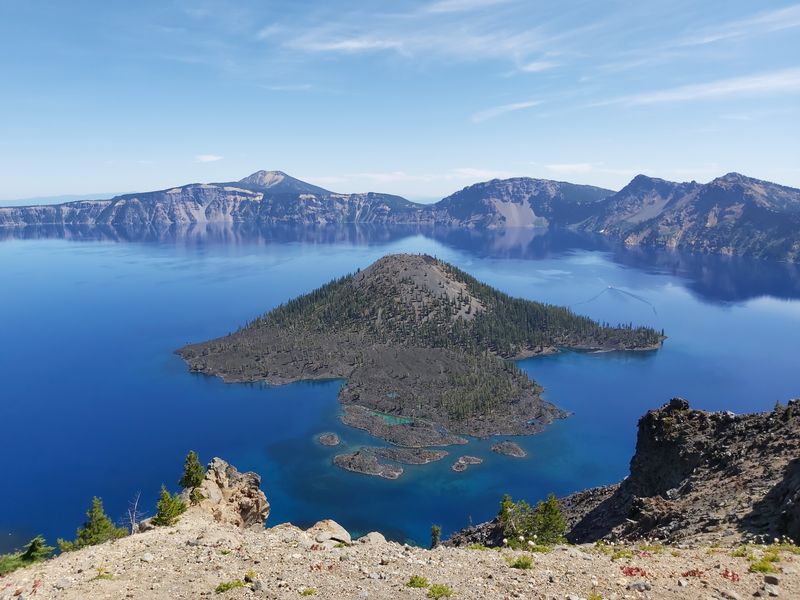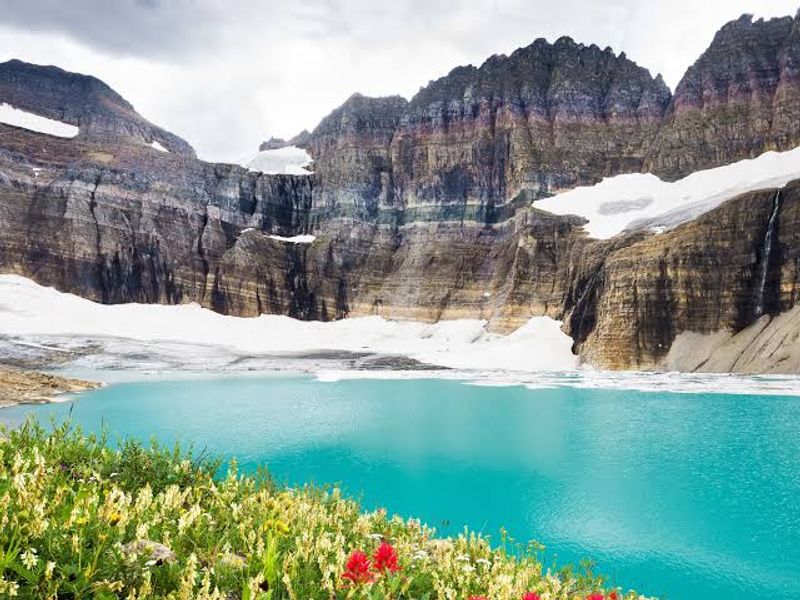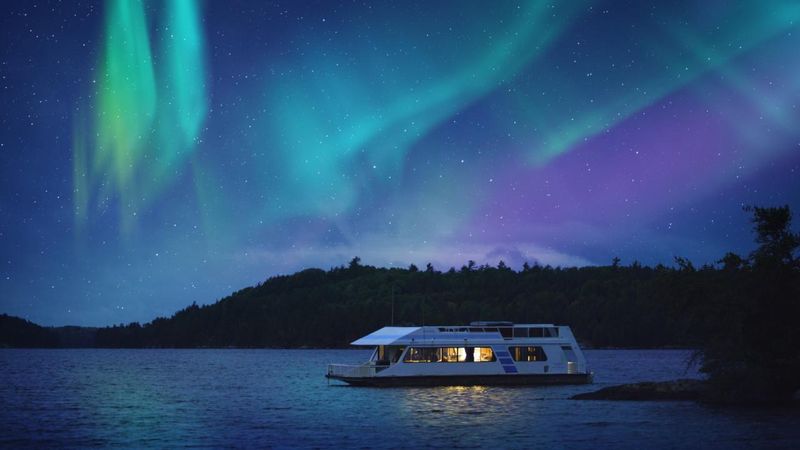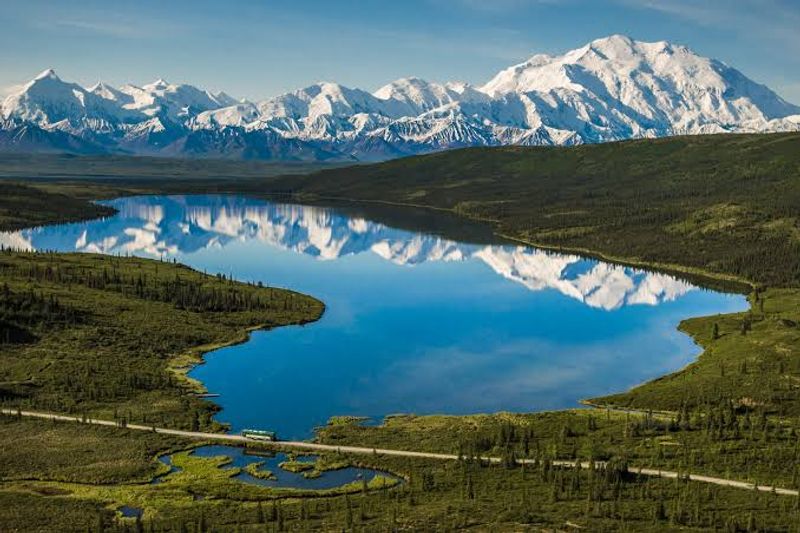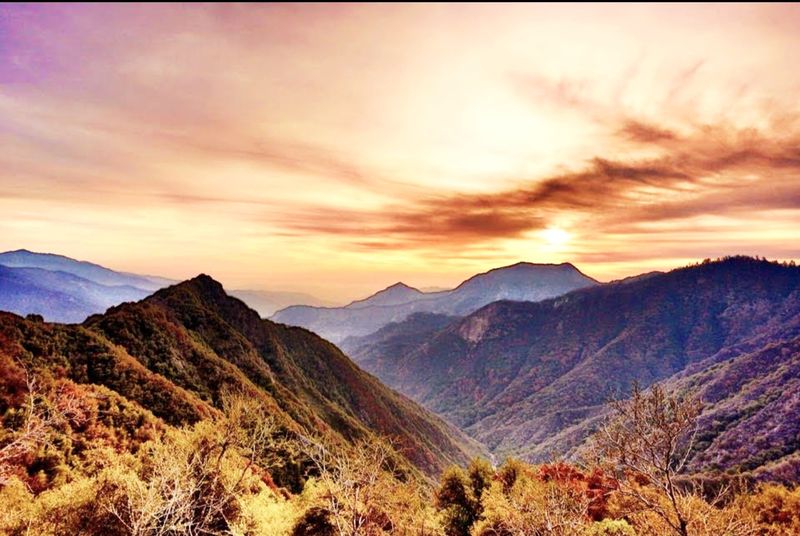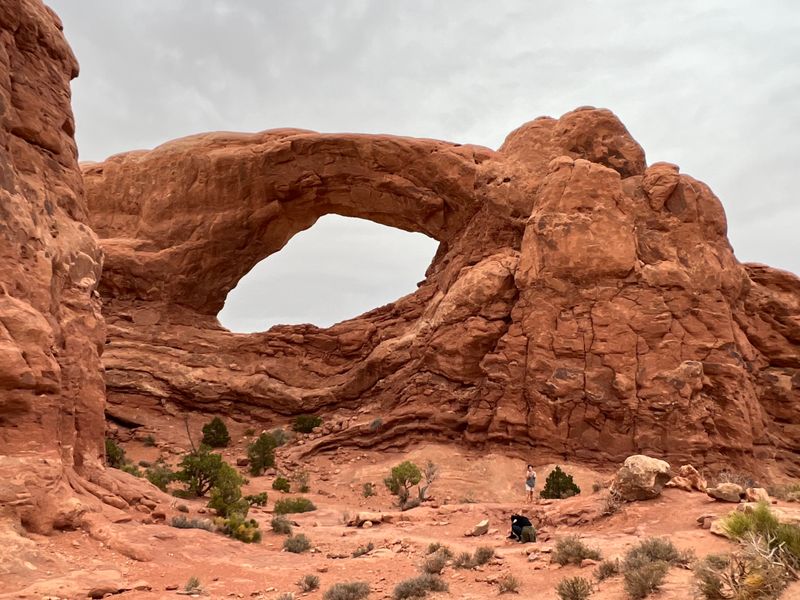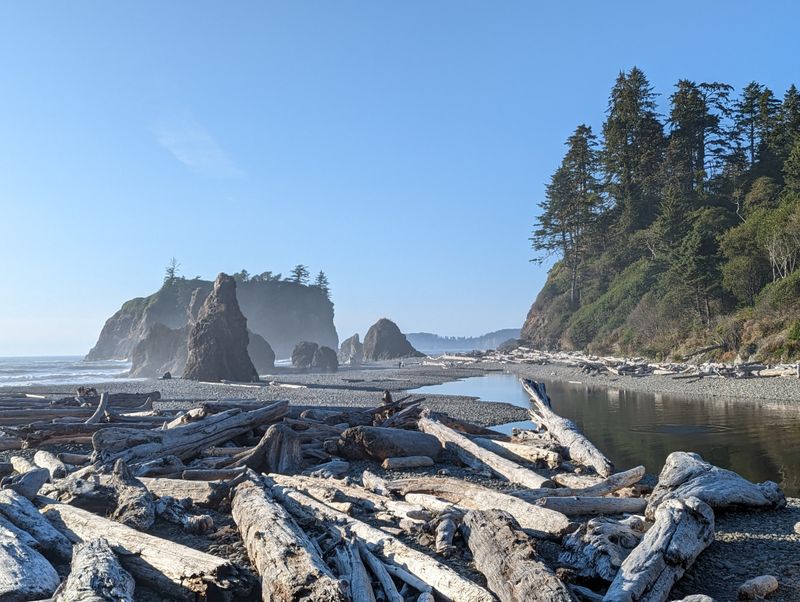Most people visit national parks during summer, but winter reveals a completely different side of these natural treasures. Snow-covered landscapes, fewer crowds, and unique wildlife experiences make cold-weather trips unforgettable. From steaming geysers in Wyoming to snow-dusted red rocks in Utah, these parks transform into magical winter destinations that offer adventure, peace, and beauty you won’t find any other time of year.
1. Yosemite (CA)
Granite walls dusted in snow and icy waterfalls create a magical atmosphere that summer crowds never witness. Empty viewpoints in Yosemite Valley let you soak in the majesty without jostling for space or waiting for photos.
Badger Pass, the park’s ski and snowboard area, operates only when snow conditions allow. Some winters it hasn’t opened at all, so smart visitors plan for snowshoeing, valley ice-skating, and marked winter ski routes as backup activities.
The quiet season reveals a softer side of these famous cliffs. Frozen mist clings to trees, and the sound of your own footsteps echoes across the valley floor in a way that feels almost sacred.
2. Bryce Canyon (UT)
Hoodoos wearing fresh snow deliver peak winter wonderland vibes that photographers dream about. The contrast between crimson rock spires and white powder creates scenes so surreal they barely look real.
Rangers offer guided snowshoe hikes when conditions permit, helping visitors explore safely while learning about the park’s geology and ecology. The main road stays plowed to major overlooks, making viewpoint access easy even in snowy months.
Trails require traction devices since ice forms quickly on steep sections. Sunrise and sunset paint the snow-covered formations in shades of pink and gold, offering some of the most stunning photo opportunities in the entire national park system.
3. Rocky Mountain (CO)
Lower valleys become perfect stages for wildlife watching when elk and bighorn sheep descend from the high country. Snowshoeing through quiet forests offers peaceful exercise and chances to spot animal tracks crisscrossing the white landscape.
Trail Ridge Road, the famous trans-park highway that climbs above treeline, closes to through travel each winter. For the 2025 to 2026 season, the official closure date is November 14, 2025, cutting off high-altitude access until late spring.
The high country turns truly alpine with conditions that rival any mountain range on Earth. Winter visitors stick to lower elevations where frozen lakes, snowy meadows, and wildlife encounters create memorable adventures without the summer traffic jams.
4. Grand Teton (WY)
Nordic skiers glide across flat terrain with the jagged Teton peaks towering overhead like frozen cathedrals. The park becomes a paradise for snowshoers who follow wildlife tracks through silent forests and across frozen meadows.
Cross-country routes wind through valleys where moose browse on willows and coyotes hunt for voles beneath the snow. Winter wildlife tracking becomes an education in animal behavior as you read the stories written in powder.
Extreme cold and short daylight demand serious planning and preparation. Temperatures can plummet to dangerous levels, and winter storms roll in quickly, but those who come prepared discover solitude and beauty that summer visitors never experience in this dramatic mountain landscape.
5. Yellowstone (WY/MT/ID)
Snow transforms Yellowstone into a silent, steamy world where geyser plumes rise dramatically against frozen forests. Bison carve paths through deep powder, creating trails that visitors follow on snowcoaches and snowmobiles.
Most interior roads close to regular cars around mid-December when over-snow travel begins, weather and operations permitting. The North to Northeast corridor stays plowed all year, connecting Gardiner to Cooke City for those seeking road access.
Always check the live Park Roads page before planning your trip to avoid surprises. Winter here feels like stepping onto another planet, where thermal features create misty wonderlands and wildlife viewing becomes intimate and thrilling.
6. Mount Rainier (WA)
Paradise lives up to its name as the park’s primary winter playground, averaging a staggering 640 inches of snow each year. That’s more than 53 feet of powder burying the meadows and buildings in a white blanket that lasts for months.
The Longmire to Paradise road gets plowed regularly but typically closes each night, so timing your visit matters. Snowshoeing, cross-country skiing, and sledding in designated areas keep families and adventurers busy throughout the winter season.
When storms clear, the massive volcano dominates the skyline in a way that takes your breath away. Standing in waist-deep snow with that peak glowing pink at sunset creates memories that last a lifetime and photos worth framing.
7. Acadia (ME)
Coastal cliffs meet quiet snow-covered forests in a combination that feels uniquely New England. From December 1 through April 14, most of Park Loop Road closes to vehicles, including the summit road to Cadillac Mountain.
Limited road segments stay open for vehicle access, but the real winter magic happens on carriage roads. These historic gravel paths become perfect routes for cross-country skiing and winter hiking without worrying about traffic.
Ocean waves crash against icy shores while inland trails wind through silent woods where chickadees and nuthatches flit between snow-laden branches. Winter transforms this coastal park into a peaceful retreat where you can walk for hours without seeing another soul, a stark contrast to summer crowds.
8. Crater Lake (OR)
Hold the record for snowiest national park entrances at an average of 42 feet each winter. That’s enough snow to bury a four-story building, creating conditions that challenge even experienced winter travelers.
Rim Village transforms into a classic base for snowplay and snowshoe adventures. Rim Drive stops functioning as a road and becomes a winter route for cross-country skiers and snowshoers willing to tackle the elevation and exposure.
Carrying chains isn’t optional here but absolutely required for reaching the park safely. The reward for that preparation is seeing the impossibly blue lake surrounded by pristine white cliffs, a color contrast so vivid it looks photoshopped even though it’s completely natural and breathtaking.
9. Glacier (MT)
Experience a genuine off-season feel when the alpine section of Going-to-the-Sun Road closes for winter. In 2025, that closure happened in early October, shutting down the famous trans-park route until the following summer.
Access from West Glacier extends only as far as plowing allows, often reaching Lake McDonald Lodge by mid-winter. Beyond that point, the road disappears under many feet of snow and avalanche danger.
This limited access creates solitude that’s hard to find anywhere else in the lower 48 states. Frozen lakes, quiet forests, and mountain peaks shrouded in clouds offer winter adventurers a taste of true wilderness. Just getting to the accessible areas feels like a journey back in time.
10. Voyageurs (MN)
Ice roads appear when lake thickness allows, creating a true Northwoods winter experience found nowhere else in the national park system. Snowmobiling on designated routes, cross-country skiing, snowshoeing, and ice fishing define the season here.
Always verify current winter trail conditions and ice thickness before venturing onto frozen lakes. What looks solid might not be safe, and conditions change with temperature fluctuations and snow cover affecting ice formation.
This water-based park transforms completely in winter when frozen surfaces become highways. The silence of a winter day here, broken only by the wind in the pines or the distant buzz of a snowmobile, captures the spirit of northern Minnesota perfectly.
11. Denali (AK)
Big-sky auroras dance overhead while hush-quiet forests stretch endlessly in every direction. Winter brings cross-country skiing, winter biking on groomed routes, and snowshoeing near the park entrance where access remains possible.
Denali Winterfest community events in late February celebrate the season with races, workshops, and gatherings that bring locals and visitors together. These festivities add warmth and fun to the coldest, darkest time of year.
The mountain itself often hides behind clouds, but when it emerges, the massive white peak dominates the horizon in a way that makes you understand why it’s sacred to Alaska Natives. Winter darkness also means prime aurora viewing, turning night skies into natural light shows.
12. Zion (UT)
Lower elevations mean crisp hiking days with far fewer crowds clogging the famous trails. Winter months outside peak holiday periods let you drive Zion Canyon Scenic Drive yourself instead of riding the shuttle that dominates warmer seasons.
The shuttle resumes for peak windows and spring, so checking the current shuttle and parking advisory before you go prevents confusion. Winter weather can bring occasional snow to the canyon floor, creating stunning contrasts against red sandstone walls.
Frozen waterfalls cling to cliff faces while the Virgin River flows clear and cold through the canyon bottom. Hiking without summer heat and crowds reveals a peaceful side of Zion that many visitors never experience, making winter an underrated time to explore.
13. Sequoia & Kings Canyon (CA)
Snow among the giant sequoias creates an unforgettable scene where the world’s largest trees wear white blankets. Walking through Giant Forest when powder clings to massive trunks feels like entering a fairy tale written for adults.
Trails in Giant Forest and Lodgepole areas often become snowy and icy, perfect for snowshoeing with proper gear. Microspikes or snowshoes aren’t optional but necessary for safe travel on winter trails that can hide slippery ice beneath fresh powder.
Chains may be required on park roads, and services become limited as visitor centers reduce hours or close entirely. Those willing to prepare for winter conditions discover a magical version of these parks where silence and solitude replace summer crowds beneath ancient trees.
14. Arches (UT)
Moab’s red rock arches dusted in snow create photogenic scenes that look like nature’s artwork. The park stays open year-round, but winter brings icy paths, limited services, and conditions that demand you pack traction devices and move slowly.
Crowds disappear in the cold months, giving you famous viewpoints almost to yourself. Delicate Arch with snow clinging to red sandstone offers photo opportunities that summer visitors never see, combining two elements that rarely meet.
Fiery Furnace guided and self-guided access may be limited by staffing, so verify current status before planning that specific adventure. Winter sunlight hits the rocks at different angles, creating warm glows against white snow that make even familiar formations look brand new and magical.
15. Olympic (WA)
Two winter moods exist in one park, offering variety that’s hard to beat. Hurricane Ridge provides snowshoeing and cross-country skiing opportunities when the road opens, typically Friday through Sunday depending on weather and avalanche conditions.
The coastal strip offers completely different winter experiences focused on storm watching. Massive Pacific waves crash against sea stacks and rocky shores while rain forests drip with moisture even when higher elevations freeze solid.
Road access to Hurricane Ridge requires preparation since conditions change rapidly and avalanche danger can close routes without warning. Visitors who check forecasts and remain flexible discover both alpine winter sports and dramatic coastal weather within the same park, making Olympic uniquely diverse for cold-season adventures.
